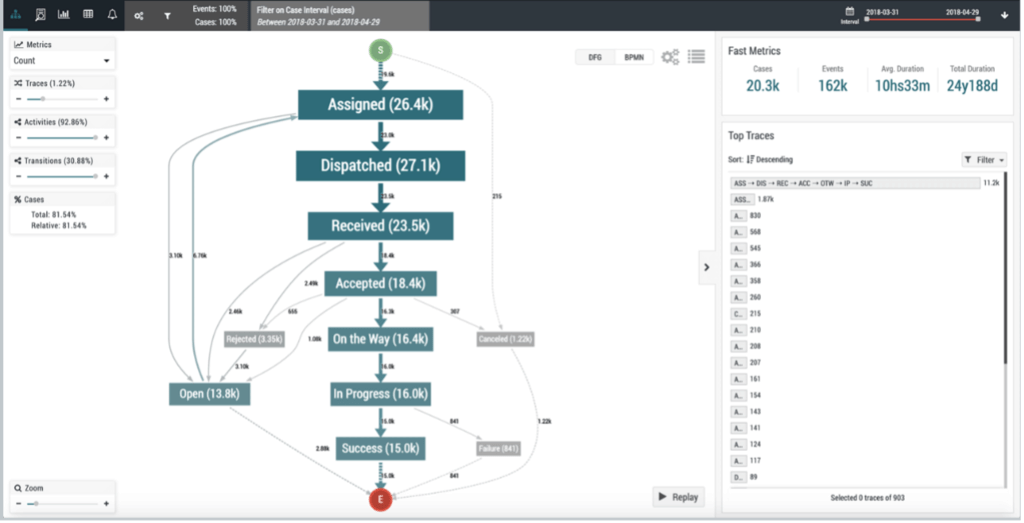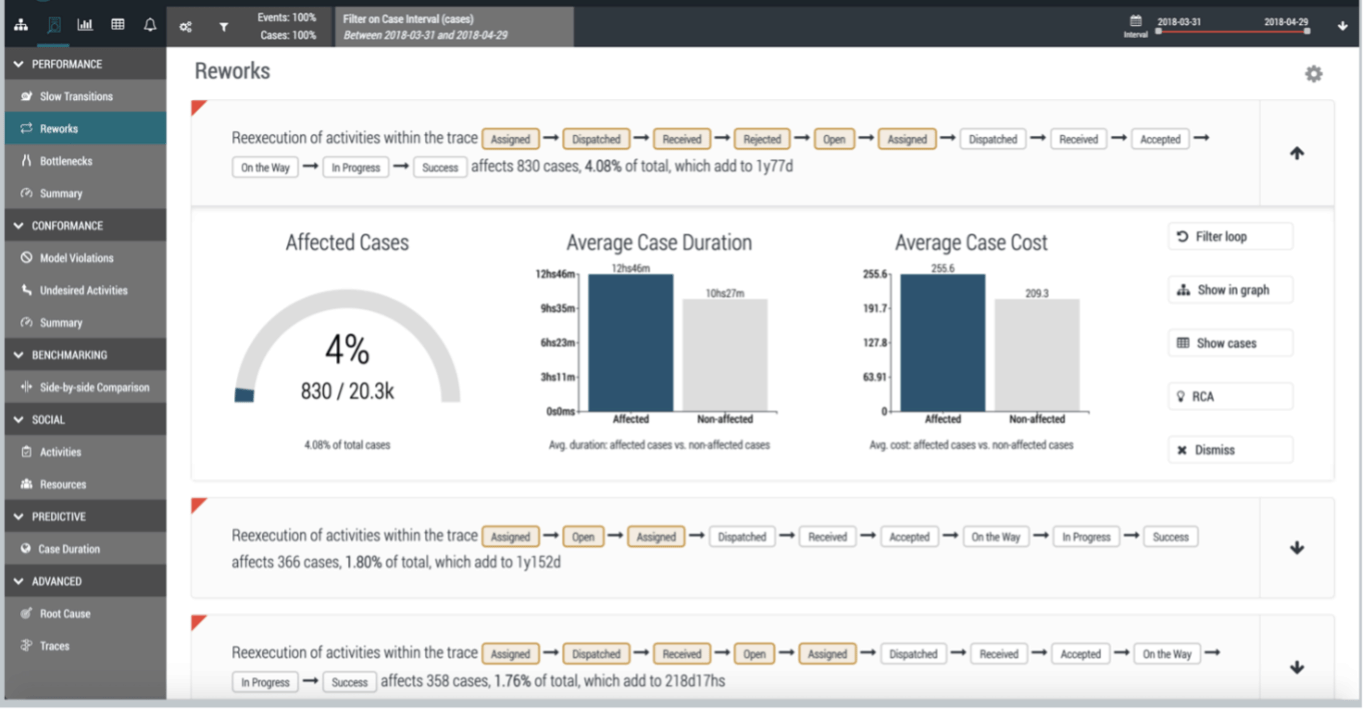Today, Pega announced the acquisition of Everflow, an innovative process mining company that focuses on process mining for the business user, providing simpler tools and powerful process analysis intelligence.
Process mining has had a heavy focus for the last few years due to the rise in need of process automation fueled by the pandemic, the “big quit,” and businesses trying to reduce risk and manual processes. Process mining is a great tool, but traditionally the tools are not very intuitive. Their purpose is to scan system files, like logs, to map out how a process flows through the business (see image 1 for example).

Image 1: Process analysis diagram
Image 1: Process analysis diagram
Typically, a process map shows the steps through the process, process variations, time inside and outside each step, and frequency of step interaction. That information is very useful in determining bottlenecks in a process and how well a process is being followed. Process mining tools also typically allow you to model or upload a model to compare how a process should run vs. what the mining tool has found.
With the new process mining capabilities integrated into Pega Process AI, Pega’s clients have a powerful analytics layer that allows business users to segment the collected data many different ways to understand their biggest issues. One example is to compare how a process runs in different cities or regions (see image 2). This takes the data analysis and data visualization to a new level without the need for deep technical knowledge.

Image 2: Process comparison across two cities
Image 2: Process comparison across two cities
Pega’s Process AI already provides self-optimizing workflows but will gain more data for analysis from process mining results, adding to the sophistication of the AI decisioning and automatic handling. That means businesses get much greater benefit from Pega’s integrated process mining as it scans to create a baseline of the process, compares against an optimal process model, and continues to scan and check for issues creating a proactive means to manage your processes, flows, and apps.
With new process mining capabilities, Pega enables business users to do more

Image 3: Process fix recommendations
Image 3: Process fix recommendations
Where other process mining tools require you to run them and to interpret the data, Pega Process AI continues to help tune, optimize, and learn to identify changes to how your business is running and either help you handle them or automatically handle them where wanted. This means less time focusing on what’s not working and why, and more time on making your process run amazingly!
Visit our Process AI page to learn how Pega turns data into action.
Pega Process AI
Turn data into action
Learn moreAI-powered decisioning
Drive better outcomes
Learn more
